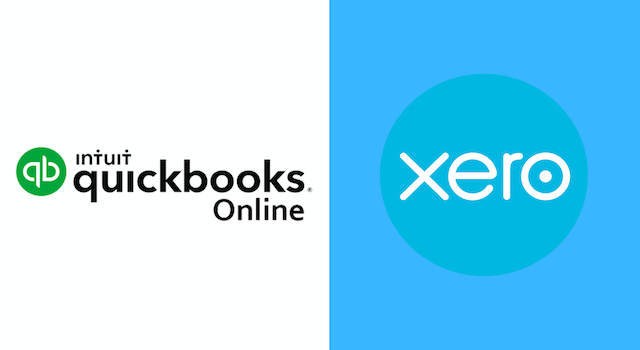Small Business Accounting
QuickBooks vs Xero Comparison: Which Is Better for Your Business?

QuickBooks has a long history of helping small businesses manage their accounting. Its desktop product was launched in 1983 and QuickBooks Online has been around since 2001. It is arguably the best-known and most widely used accounting solution for small businesses on the market today.
Xero was founded in 2006 and is quickly catching up. With its tagline “Beautiful business,” Xero’s focus is on making the accounting process as sleek and user-friendly as possible. So how do they compare? What are the key differences between QuickBooks and Xero, and which is better for your business?
QuickBooks vs Xero: At a Glance
QuickBooks and Xero are both popular accounting solutions for small to midsize businesses. If you compare features, QuickBooks is a clear favorite for its scalability and connectedness with accountants. Simply by being the most widely used accounting solution, it’s easy to loop in your accountant. QuickBooks reporting functionality are key in gaining insights into your overall accounting process.
However, QuickBooks isn’t right for all businesses. Xero’s unlimited user plan makes it, financially at least, a strong competitor, particularly among larger businesses. Xero also excels in its sleek design and ease of use.
In short, QuickBooks is the prime choice for businesses that want to grow and are looking for in-depth reporting capabilities. Xero is best for cost-conscious businesses needing 5+ users or, on the other end of the spectrum, self-employed people who don’t feel a full-blown solution.
QuickBooks vs Xero: Pricing Comparison
In terms of pricing, both solutions are subscription-based. However, Xero offers unlimited users with all its plans.
QuickBooks pricing:
Simple Start: $25 per month for 1 user, 2 accounting firms
Essentials: $50 per month for 3 users, 2 accounting firms
Plus: $80 per month for 5 users, 2 accounting firms
Advanced: $180 per month for 25 users, 3 accounting firms
QuickBooks’ Simple Start plan comes with more functionality than Xero’s cheapest plan, including handling income and expenses, receipts, invoicing and payments, as well as basic reporting. The main drawbacks are access for just one user, and you can’t track time and inventory. QuickBooks scales up easily to provide more users and features, but this comes at a higher cost than with Xero.
Xero pricing:
Early: $12 per month
Growing: $34 per month
Established: $65 per month
The big win with Xero’s pricing is that each plan has unlimited users. Their basic plans offers few features. Most companies use their Growing plan, which includes sending invoices and quotes, entering bills and reconciling bank transactions.
QuickBooks vs Xero: Feature Comparison
If you want an accounting solution that scales as your business grows, QuickBooks may be the right fit. But if you’re either a larger business or a solopreneur, Xero might be a better choice. Here is an overview of the key features.
| Accounting Feature | QuickBooks | Xero |
| Integrations | 650+ apps | 1000+ apps |
| Mobile App | Yes | Yes |
| Expense Tracking | Yes | Yes |
| Time Tracking | Yes | Yes |
| Invoicing | Yes | Yes |
| Inventory Management | Yes | Yes |
| Purchase Orders | Yes | Yes |
| Payroll | Yes | Add-on |
| Vendor Bills and Credits | Yes | Yes |
| Budgeting/Forecasting | Yes | Yes |
| 1099 Reporting | Yes | Yes |
Now let’s explore some of the key features of an accounting solution to see how QuickBooks and Xero compare, and where each software shines.
At a glance, QuickBooks offers more features than Xero at the basic level, but it’s also more expensive. A key difference between the two solutions is how they handle bank reconciliation and fixed asset accounting.
When it comes to handling bank reconciliation, QuickBooks comes out as the winner. Both solutions integrate easily with your bank or credit card account to synchronize your transactions, but also allow you to manually upload those transactions. Xero requires a bank statement to perform a bank reconciliation, however.
Xero offers automatic bank feeds. After you make the initial connection between Xero and your bank, data will be updated automatically every business day. With QuickBooks you can connect any bank account, provided that the bank is supported under the Open Banking regulations. Bank feeds will give you a real-time view of your cashflow and finances.
If fixed asset accounting is a key concern for you, then Xero might be the better choice for your business. QuickBooks allows you to record a fixed asset purchase, and that’s it. Xero allows you to record the asset purchase and then calculate depreciation, create asset types, assign an account ID for each asset, as well as calculate gains or losses when you sell.
QuickBooks offers a wide range of inventory functionality, including low-stock warnings, reordering, rate customization, and reporting to track what’s in stock and what’s selling. These inventory features are only available on the Plus and Advanced plans, however.
The big win for Xero is that inventory management is included in all plans. This is especially attractive to small businesses that need to keep track of their products and the materials without wanting to pay $80/month.
When to Choose QuickBooks
QuickBooks’ strongest selling points are its scalability and wide adoption. Its comprehensive features can grow along with your business. Plus it integrates with many other Intuit products such as QuickBooks Point-of-Sale to include other areas of your business. The downside is cost. QuickBooks isn’t cheap, especially as you grow your number of users, and solopreneurs especially may find the basic plan to be cost-prohibitive. That said, Xero’s lowest plan is too restrictive with its features to be used by even the smallest businesses.
Due to the QuickBooks’ history, it’s the most widely used solution among accountants. So if you want to be loop in your accountant, as well as manage bank feeds and third-party app integrations, QuickBooks may be the right choice for you.
Also, QuickBooks has a strong reporting suite, especially at the Pro level with enhanced reporting and project profitability. It outshines Xero with its level of customization for dashboards.
Lastly, QuickBooks is widely known in the US. And while Xero is catching up, it’s originally a New Zealand company and you may find that your accountant is less familiar with this software.
When to Choose Xero
Xero wins for its sleek design, ease of use, and its cost — with some caveats. At its lowest price point, Xero is a better entry solution than QuickBooks, with strong core functionality for handling invoices and payments. Xero offers basic inventory management with every plan, while QuickBooks only offers this at the $80/month level.
In terms of design, Xero simply looks better. QuickBooks has improved its look-and-feel and user-friendliness over the years, but Xero has really taken the lead here. Beautiful business indeed.
Although Xero has made a big push into the worldwide market, the New Zealand company is particularly well-known and used outside of the US. Automatic bank feeds are a key advantage here over QuickBooks, along with tax handling. Audit trails and safety checks are built-in, plus GAAP-compliant Statement of Cash Flows.
In short, if your business is looking for strong international capabilities, inventory management out of the box, and unlimited users, Xero is the better choice.






